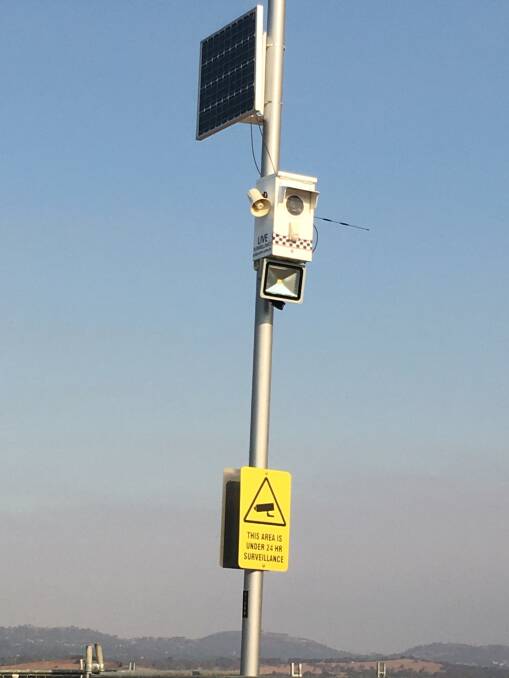The proliferation of networked cameras watching over Canberra and its citizens has been revealed with a territory-wide audit revealing there are now 4876 CCTV cameras in ACT government hands, and all are quietly being inter-connected.
Transport Canberra and City Services owns 75 per cent of the cameras, mostly because it has more than 460 buses in its fleet, with an average of six cameras per bus.
There are also hundreds of cameras in other separate, non-aligned systems such as ACT Corrections, the courts and Capital Metro, and thousands of private networks.
The government is currently engaged in Project Bluesky, which will trial the storage of CCTV in a central data storage location. One of the project's stated aims is to provide a higher level of "connectedness" between the various networks, with government's Security and Emergency Management Branch looming as the most likely gatekeepers.
Police are major collectors of the government's vision and support a more cohesive system which would make extracting evidential footage easier. Investigators have requested CCTV footage from inside Canberra's buses 279 times in the past three years in its search for offenders and to aid its investigations.

Solar-powered public safety cameras are placed in remote areas of the ACT, watching out for illegal dumpers, hoon driving and car fires. Picture: Peter Brewer
The bus vision is by far the most requested across the ACT, the latest report from the auditor-general into the management of closed circuit television systems has revealed.
Canberra's newest buses have six or more factory-installed cameras, although the auditor found Transport Canberra did not have any specific policies or procedures "for the collection, recording and storage of data from CCTV cameras on board buses".
Roles and responsibilities for the various systems also were criticised by the auditor, who recommended an annual review of the CCTV networks to check on their effectiveness, their benefit against the cost of maintaining them, and whether in fact they were needed at all.
This is being progressed under Project BlueSky, with the Justice and Community Safety directorate as the policy leader. Not addressed in the guidelines is the issue of surveillance "function creep", in which plug-in capabilities such as facial recognition can be easily added later.
The collection and storage of CCTV footage by various government authorities is subject to a range of guidelines, memoranda and codes of practice, including ACT-specific legislation which requires footage to be destroyed 30 days after being created.
Public safety cameras, generally set up to detect criminal behaviour, have been around in Canberra since 2001 and the latest audit found as of January this year, the ACT now had 97.
Of these, 22 were solar-powered "remote cameras" at places like the Jerrabomberra wetlands, Lanyon Homestead, the vandal-prone Belconnen Owl, and Mt Taylor car park to identify offenders involved in such activity as illegal dumping, car theft and property damage. These transmit data using the mobile phone network.
In demountables at the back of Winchester Police Centre are monitors for the public safety system, with the most heavily scrutinised being Canberra's nightclub areas, particularly into the early hours of the morning.
Live and recorded footage is used for "the purpose of supporting public safety through asset security, business monitoring, event management, incident management and the investigation of crime".
Six-monthly reports are compiled on how many times data has been accessed but the auditor noted there was "no assessment of the system's impact on crime levels, or an assessment of the usefulness of the footage, such as for the identification or arrest of suspects".
Not widely known is that there are 30 cameras in ACT libraries. These were originally installed to monitor people using the internet booths but more recently were extended to watch over places such as children's reading areas "due to a perceived risk for the welfare of children".
The government had been waiting for the outcome of the auditor's report to continue its mapping of the network and the drafting of a new policy. This would also include a cost-benefit analysis assessment to help "inform the government when considering future investment in the ... network".
The auditor was critical that many of the guidelines had not been updated. It was also found that "records associated with [the public safety network] establishment, including any documentation associated with its original purpose and objectives, have not been retained as per territory record-keeping requirements".
The ACT government set aside $948,000 in its 2018-19 budget, spread over four years, to upgrade the public safety network at key locations identified by police.
Our journalists work hard to provide local, up-to-date news to the community. This is how you can continue to access our trusted content:
https://news.google.com/__i/rss/rd/articles/CBMiWmh0dHBzOi8vd3d3LmNhbmJlcnJhdGltZXMuY29tLmF1L3N0b3J5LzczMDcxNTUvdGhvdXNhbmRzLW9mLWNhbWVyYXMtd2F0Y2hpbmctb3Zlci10aGUtYWN0L9IBAA?oc=5
2021-06-26 18:00:00Z
52781694283172
Bagikan Berita Ini














0 Response to "ACT camera system set to expand further - The Canberra Times"
Post a Comment